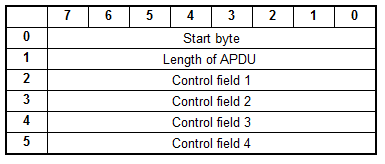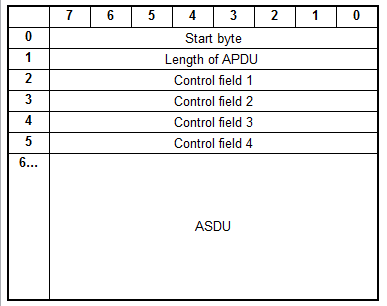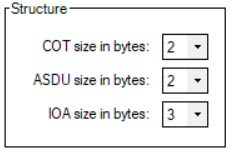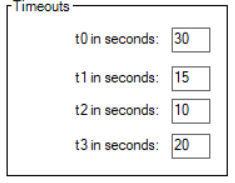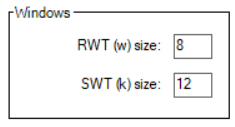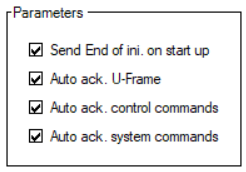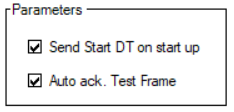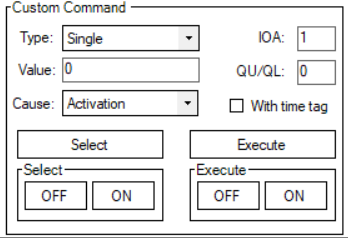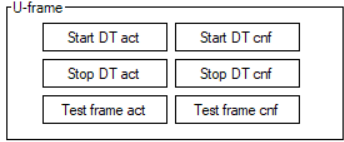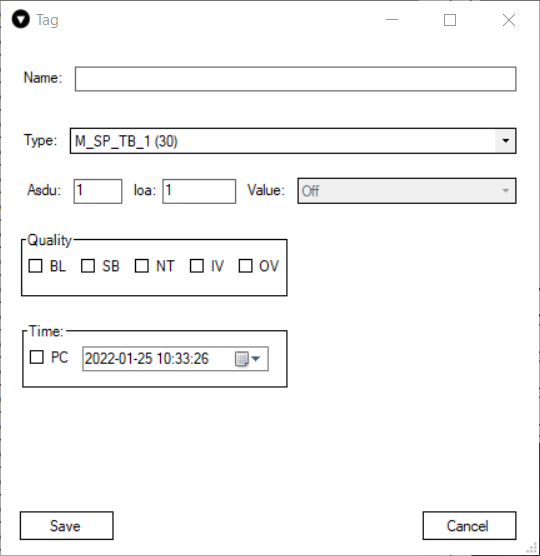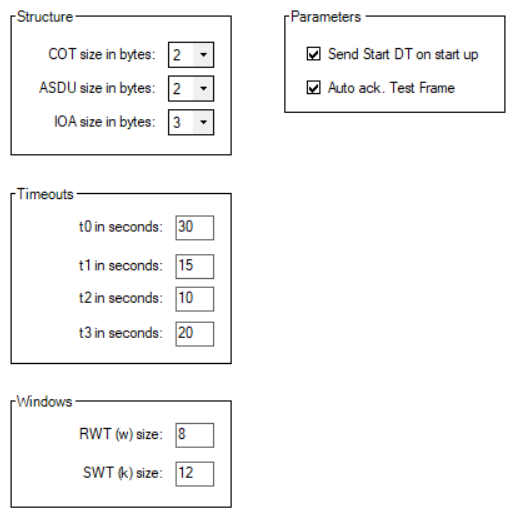IEC 60870-5-104
IEC 60870-5-104 is a protocol for power system monitoring and controlling. Mostly used to communication between substations and control centers over Ethernet (Fiber optics, 2/3/4G, ...).IEC 60870-5-104 protocol is an extension of IEC 60870-5-101 protocol with the changes in transport, network, link and physical layer services to suit the complete network access.
Info about protocol
Telegram Structure
Teleram format with fixed length
Telegram format with variable length
- APCI - Application Protocol Control Information (First 6 bytes)
- APDU - Application Protocol Data Unit (All variable length telegram)
- ASDU - Application Service Data Unit
Type identification
Standard IEC 60870-5-104 data types[1-255]
- [1-127] - standard definition
- [128-135] - reserved for routing of messages
- [136-255] - for special use
|
Dec |
Type |
Description |
Direction |
Support |
|
Process information |
||||
|
1 |
M_SP_NA_1 |
Single-point information |
Monitor |
Yes |
|
2 |
M_SP_TA_1 |
Single-point information with time tag |
Monitor |
Yes |
|
3 |
M_DP_NA_1 |
Double-point information |
Monitor |
Yes |
|
4 |
M_DP_TA_1 |
Double-point information with time tag |
Monitor |
Yes |
|
5 |
M_ST_NA_1 |
Step position information |
Monitor |
Yes |
|
6 |
M_ST_TA_1 |
Step position information with time tag |
Monitor |
Yes |
|
7 |
M_BO_NA_1 |
Bit string of 32 bit |
Monitor |
Yes |
|
8 |
M_BO_TA_1 |
Bit string of 32 bit with time tag |
Monitor |
Yes |
|
9 |
M_ME_NA_1 |
Measured value, normalized value |
Monitor |
Yes |
|
10 |
M_ME_TA_1 |
Measured value, normalized value with time tag |
Monitor |
Yes |
|
11 |
M_ME_NB_1 |
Measured value, scaled value |
Monitor |
Yes |
|
12 |
M_ME_TB_1 |
Measured value, scaled value wit time tag |
Monitor |
Yes |
|
13 |
M_ME_NC_1 |
Measured value, short floating point number |
Monitor |
Yes |
|
14 |
M_ME_TC_1 |
Measured value, short floating point number with time tag |
Monitor |
Yes |
|
15 |
M_IT_NA_1 |
Integrated totals |
Monitor |
Yes |
|
16 |
M_IT_TA_1 |
Integrated totals with time tag |
Monitor |
Yes |
|
17 |
M_EP_TA_1 |
Event of protection equipment with time tag |
Monitor |
Yes |
|
18 |
M_EP_TB_1 |
Packed start events of protection equipment with time tag |
Monitor |
Yes |
|
19 |
M_EP_TC_1 |
Packed output circuit information of protection equipment with time tag |
Monitor |
Yes |
|
20 |
M_PS_NA_1 |
Packed single point information with status change detection |
Monitor |
Yes |
|
21 |
M_ME_ND_1 |
Measured value, normalized value without quality descriptor |
Monitor |
Yes |
|
30 |
M_SP_TB_1 |
Single-point information with time tag CP56Time2a |
Monitor |
Yes |
|
31 |
M_DP_TB_1 |
Double-point information with time tag CP56Time2a |
Monitor |
Yes |
|
32 |
M_ST_TB_1 |
Step position information with time tag CP56Time2a |
Monitor |
Yes |
|
33 |
M_BO_TB_1 |
Bit string of 32 bit with time tag CP56Time2a |
Monitor |
Yes |
|
34 |
M_ME_TD_1 |
Measured value, normalized value with time tag CP56Time2a |
Monitor |
Yes |
|
35 |
M_ME_TE_1 |
Measured value, scaled value with time tag CP56Time2a |
Monitor |
Yes |
|
36 |
M_ME_TF_1 |
Measured value, short floating point number with time tag CP56Time2a |
Monitor |
Yes |
|
37 |
M_IT_TB_1 |
Integrated totals with time tag CP56Time2a |
Monitor |
Yes |
|
38 |
M_EP_TD_1 |
Event of protection equipment with time tag CP56Time2a |
Monitor |
Yes |
|
39 |
M_EP_TE_1 |
Packed start events of protection equipment with time tag CP56Time2a |
Monitor |
Yes |
|
40 |
M_EP_TF_1 |
Packed output circuit information of protection equipment with time tag CP56Time2a |
Monitor |
Yes |
|
45 |
C_SC_NA_1 |
Single command |
Control |
Yes |
|
46 |
C_DC_NA_1 |
Double command |
Control |
Yes |
|
47 |
C_RC_NA_1 |
Regulating step command |
Control |
Yes |
|
48 |
C_SE_NA_1 |
Set-point Command, normalized value |
Control |
Yes |
|
49 |
C_SE_NB_1 |
Set-point Command, scaled value |
Control |
Yes |
|
50 |
C_SE_NC_1 |
Set-point Command, short floating point number |
Control |
Yes |
|
51 |
C_BO_NA_1 |
Bit string 32 bit command |
Control |
Yes |
|
58 |
C_SC_TA_1 |
Single command with time tag CP56Time2a |
Control |
Yes |
|
59 |
C_DC_TA_1 |
Double command with time tag CP56Time2a |
Control |
Yes |
|
60 |
C_RC_TA_1 |
Regulating step command with time tag CP56Time2a |
Control |
Yes |
|
61 |
C_SE_TA_1 |
Measured value, normalized value command with time tag CP56Time2a |
Control |
Yes |
|
62 |
C_SE_TB_1 |
Measured value, scaled value command with time tag CP56Time2a |
Control |
Yes |
|
63 |
C_SE_TC_1 |
Measured value, short floating point number command with time tag CP56Time2a |
Control |
Yes |
|
64 |
C_BO_TA_1 |
Bit string of 32 bit command with time tag CP56Time2a |
Control |
Yes |
|
System information |
||||
|
70 |
M_EI_NA_1 |
End of Initialization |
Monitor |
Yes |
|
100 |
C_IC_NA_1 |
Interrogation command |
Control |
Yes |
|
101 |
C_CI_NA_1 |
Counter interrogation command |
Control |
Yes |
|
102 |
C_RD_NA_1 |
Read command |
Control |
Yes |
|
103 |
C_CS_NA_1 |
Clock synchronization command |
Control |
Yes |
|
104 |
C_TS_NA_1 |
Test command |
Control |
Yes |
|
105 |
C_RP_NA_1 |
Reset process command |
Control |
Yes |
|
106 |
C_CD_NA_1 |
Delay acquisition command |
Control |
No |
|
107 |
C_TS_TA_1 |
Test command with time tag CP56Time2a |
Control |
No |
|
Parameter |
||||
|
110 |
P_ME_NA_1 |
Parameter of measured values, normalized value |
Control |
No |
|
111 |
P_ME_NB_1 |
Parameter of measured values, scaled value |
Control |
No |
|
112 |
P_ME_NC_1 |
Parameter of measured values, short floating point number |
Control |
No |
|
113 |
P_AC_NA_1 |
Parameter activation |
Control |
No |
|
File transfer |
||||
|
120 |
F_FR_NA_1 |
File ready |
File transfer |
No |
|
121 |
F_SR_NA_1 |
Section ready |
File transfer |
No |
|
122 |
F_SC_NA_1 |
Call directory, select file, call file, call section |
File transfer |
No |
|
123 |
F_LS_NA_1 |
Last section, last segment |
File transfer |
No |
|
124 |
F_FA_NA_1 |
ACK file, ACK section |
File transfer |
No |
|
125 |
F_SG_NA_1 |
Segment |
File transfer |
No |
|
126 |
F_DR_TA_1 |
Directory |
File transfer |
No |
|
127 |
F_SC_NB_1 |
Request archive file |
File transfer |
No |
Cause of transmission
Standard IEC 60870-5-101 cause of transmission [0-63]
|
Dec |
Description |
|
1 |
Periodic, cyclic |
|
2 |
Background interrogation |
|
3 |
Spontaneous |
|
4 |
Initialized |
|
5 |
Interrogation or interrogated |
|
6 |
Activation |
|
7 |
Confirmation activation |
|
8 |
Deactivation |
|
9 |
Confirmation deactivation |
|
10 |
Termination activation |
|
11 |
Return information caused by a remote command |
|
12 |
Return information caused by a local command |
|
13 |
File transfer |
|
20 |
Interrogated by general interrogation |
|
21 |
Interrogated by interrogation group 1 |
|
22 |
Interrogated by interrogation group 2 |
|
23 |
Interrogated by interrogation group 3 |
|
24 |
Interrogated by interrogation group 4 |
|
25 |
Interrogated by interrogation group 5 |
|
26 |
Interrogated by interrogation group 6 |
|
27 |
Interrogated by interrogation group 7 |
|
28 |
Interrogated by interrogation group 8 |
|
29 |
Interrogated by interrogation group 9 |
|
30 |
Interrogated by interrogation group 10 |
|
31 |
Interrogated by interrogation group 11 |
|
32 |
Interrogated by interrogation group 12 |
|
33 |
Interrogated by interrogation group 13 |
|
34 |
Interrogated by interrogation group 14 |
|
35 |
Interrogated by interrogation group 15 |
|
36 |
Interrogated by interrogation group 16 |
|
37 |
Interrogated by counter general interrogation |
|
38 |
Interrogated by interrogation counter group 1 |
|
39 |
Interrogated by interrogation counter group 2 |
|
40 |
Interrogated by interrogation counter group 3 |
|
41 |
Interrogated by interrogation counter group 4 |
|
44 |
Type Identification unknown |
|
45 |
Cause unknown |
|
46 |
ASDU address unknown |
|
47 |
Information object address unknown |
Settings
|
Structure |
|||
|
|
|
Master, Slave, Monitor | |
|
COT size in bytes |
COT size in bytes |
||
|
ASDU size in bytes |
ASDU size in bytes |
||
|
IOA size in bytes |
IOA size in bytes |
||
|
Timeouts (ms) |
|||
|
|
|
Master |
Slave |
|
t0 in seconds |
Timeout for the establishment of the connection with the server. |
Not used |
|
|
t1 in seconds |
This parameter defines the time in seconds that Master waits maximum for an acknowledge from the slave. |
This parameter defines the time in seconds that slave waits maximum for an acknowledge from the master. |
|
|
t2 in seconds |
A S-format frame will be sent at the latest after this time starting from the last received telegram from the slave. |
A S-format frame will be sent at the latest after this time starting from the last received telegram from the master. |
|
|
t3 in seconds |
A Test frame will be sent at the latest after this time starting from the last received telegram from the slave. |
A Test frame will be sent at the latest after this time starting from the last received telegram from the master |
|
|
Windows |
|||
|
|
|
Master |
Slave |
|
w size |
This parameter indicates the number of received I frames after the S-Frame will be send. |
This parameter indicates the number of received I frames after the S-Frame will be send |
|
|
k size |
Maximum I-frames send until acknowledgment. |
Not used |
|
| SLAVE Parameters | |||
|
|
|
Slave |
|
|
Send End of ini. on start up |
Send end of initialization TI 70 (M_EI_NA_1) |
||
|
Auto ack. U-Frame |
Auto ack. U-Frame. |
||
|
Auto ack. control commands |
Auto acknowledge commands |
||
|
Auto ack. system commands |
Auto acknowledge system commands (TI: 100, 103) |
||
|
MASTER Parameters |
|||
|
|
|
Master |
|
|
Send Start DT on start up |
Send Start DT on startup |
||
|
Auto ack. Test Frame |
Auto ack. Test frame |
||
System
For all system functions user can set custom address:
General Interrogation
This function will send telegram Type-identification = 100 (C_IC_NA_1)
QOI - qualifier of interrogation [0...255]
- 20 - Station interrogation
- 21 - Interrogation of group 1
- 22 - Interrogation of group 2
- 23 - Interrogation of group 3
- 24 - Interrogation of group 4
- 25 - Interrogation of group 5
- 26 - Interrogation of group 6
- 27 - Interrogation of group 7
- 28 - Interrogation of group 8
- 29 - Interrogation of group 9
- 30 - Interrogation of group 10
- 31 - Interrogation of group 11
- 32 - Interrogation of group 12
- 33 - Interrogation of group 13
- 34 - Interrogation of group 14
- 35 - Interrogation of group 15
- 36 - Interrogation of group 16
Counter Interrogation
This function will send telegram Type-identification = 101 (C_CI_NA_1)
FRZ - freeze[0..3]
- 0 - Station interrogation
- 1 - Interrogation of group 1
- 2 - Interrogation of group 2
- 3 - Interrogation of group 3
RQT - request[0..63]
- 1 - Counter group 1
- 2 - Counter group 2
- 3 - Counter group 3
- 4 - Counter group 3
- 5 - General request
Commands
Read command will send telegram Type-identification = 102 (C_RD_NA_1)
Test command will send telegram Type-identification = 104 (C_TS_NB_1)
Clock synchronization
This function will send telegram Type-identification = 103 (C_CS_NA_1)
If "PC time" checkbox is checked, then the PC time will be sent. If it's not checked user can set time manually.
Time tag status bits:
- IV - invalid time
- SM - Summer/Winter
- SB - Substitute
Custom Commands
This function allows user to send commands to the slave device.
Channel
With these functions a user has the ability to send any U or S frame telegram.
- Start DT act - Send Start Data terminal activation
- Start DT cnf - Send Start Data terminal confirmation
- Stop DT act - Send Stop Data terminal activation
- Stop DT cnf - Send Stop Data terminal confirmation
- Test Frm act - Send Test Frame activation
- Test Frm cnf - Send Test Frame confirmation
S-Frame ack - Send S-Frame. User can specify acknowledgment telegram count in text box.
Tags
This function allows user to created named points. After points created user can send it manually or set reply checkbox to automatic reply.
There are two ways of creating tags:
Main parameters:
- Name - user-friendly tag name
- Asdu - Identifier of the device
- Ioa - Identifier of values from the device.
- Type - the type of value.
Here is an example image of the tag window with the M_SP_TB_1 (30) type selected. Each type has different options that can be configured when sending data. For example this type depicted in the picture below can send a value Off or On and it also is time-tagged. The user in this case can either select a specific time that they have in mind or just mark the PC checkbox and The Vinci software will automatically send the current PC time. As you can see the Value box in this example is greyed out that is because this tag is created on a master simulation, and this type doesn't support writing to slave.
Setup
To setup an IEC 60870-5-104 simulation it is fairly straightforward.
1. Select IEC 60870-5-104 and the mode.
2. Select Ethernet settings to connect to device. Set the IP and the Port. (Default port: 2404)
3. Select settings in the settings tab according to your device and preference.
4. Press the green START button and the simulation should start. If everything was done correctly The Vinci software should establish communication with the IEC 60870-5-104 device which you can monitor in the console tab.


